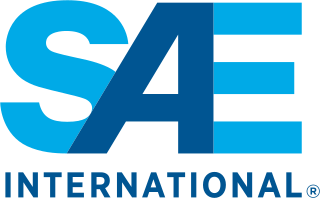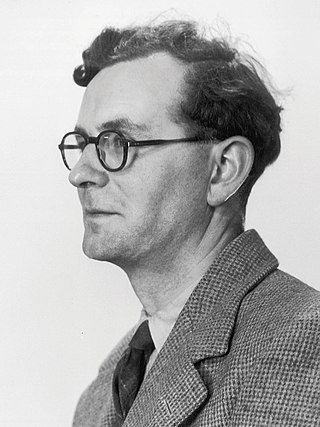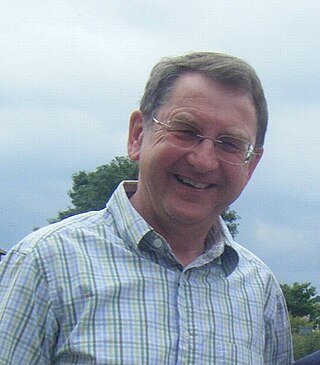
John Maynard Smith was a British theoretical and mathematical evolutionary biologist and geneticist. Originally an aeronautical engineer during the Second World War, he took a second degree in genetics under the well-known biologist J. B. S. Haldane. Maynard Smith was instrumental in the application of game theory to evolution with George R. Price, and theorised on other problems such as the evolution of sex and signalling theory.

Sir Charles Antony Richard Hoare is a British computer scientist who has made foundational contributions to programming languages, algorithms, operating systems, formal verification, and concurrent computing. His work earned him the Turing Award, usually regarded as the highest distinction in computer science, in 1980.

This article presents a detailed timeline of events in the history of computing software and hardware: from prehistory until 1949. For narratives explaining the overall developments, see History of computing.

Lotfi Aliasker Zadeh was a mathematician, computer scientist, electrical engineer, artificial intelligence researcher, and professor of computer science at the University of California, Berkeley. Zadeh is best known for proposing fuzzy mathematics, consisting of several fuzzy-related concepts: fuzzy sets, fuzzy logic, fuzzy algorithms, fuzzy semantics, fuzzy languages, fuzzy control, fuzzy systems, fuzzy probabilities, fuzzy events, and fuzzy information. Zadeh was a founding member of the Eurasian Academy.
The Royal Radar Establishment was a research centre in Malvern, Worcestershire in the United Kingdom. It was formed in 1953 as the Radar Research Establishment by the merger of the Air Ministry's Telecommunications Research Establishment (TRE) and the British Army's Radar Research and Development Establishment (RRDE). It was given its new name after a visit by Queen Elizabeth II in 1957. Both names were abbreviated to RRE. In 1976 the Signals Research and Development Establishment (SRDE), involved in communications research, joined the RRE to form the Royal Signals and Radar Establishment (RSRE).

Ira Remsen was an American chemist who discovered the artificial sweetener saccharin along with Constantin Fahlberg. He was the second president of Johns Hopkins University.

SAE International, formerly named the Society of Automotive Engineers, is a United States-based, globally active professional association and standards developing organization for engineering professionals in various industries. SAE International's world headquarters is in Warrendale, Pennsylvania, 20 miles north of Pittsburgh, Pennsylvania. Principal emphasis is placed on global transport industries such as aerospace, automotive, and commercial vehicles. The organization adopted the name SAE International to reflect the broader emphasis on mobility.

The Hughes Medal is awarded by the Royal Society of London "in recognition of an original discovery in the physical sciences, particularly electricity and magnetism or their applications". Named after David E. Hughes, the medal is awarded with a gift of £1000. The medal was first awarded in 1902 to J. J. Thomson "for his numerous contributions to electric science, especially in reference to the phenomena of electric discharge in gases", and has since been awarded over one-hundred times. Unlike other Royal Society medals, the Hughes Medal has never been awarded to the same individual more than once.

Prof Rodney Robert Porter, CH, FRS FRSE HFRCP was a British biochemist and Nobel laureate.
Oswald Stevens Nock, B. Sc., DIC, C. Eng, M.I.C.E., M.I.Mech.E., M.I.Loco.E.,, nicknamed Ossie, was a British railway signal engineer and senior manager at the Westinghouse company; he is well known for his prodigious output of popularist publications on railway subjects, including over 100 books, as well as many more technical works on locomotive performance.

The Telford Medal is a prize awarded by the British Institution of Civil Engineers (ICE) for a paper or series of papers. It was introduced in 1835 following a bequest made by Thomas Telford, the ICE's first president. It can be awarded in gold, silver or bronze; the Telford Gold Medal is the highest award the institution can bestow.

Roland Carl Backhouse is a British computer scientist and mathematician. As of 2020, he is Emeritus Professor of Computing Science at the University of Nottingham.

Sir John Harold Horlock FRS FREng was a British professor of mechanical engineering, and was vice-chancellor of both the Open University and the University of Salford, as well as vice-president of the Royal Society. In 1977, he was elected a fellow of the Royal Academy of Engineering
(Hans) Peter Israel Jost, CBE was a British mechanical engineer. He was the founder of the discipline of tribology, the science and engineering of interacting surfaces in relative motion. In 1966, Jost published a report which highlighted the cost of friction, wear and corrosion to the United Kingdom economy. It was in this eponymous report that he coined the term tribology, which has now been widely adopted.

Sir John Michael Brady is an emeritus professor of oncological imaging at the University of Oxford. He has been a Fellow of Keble College, Oxford, since 1985 and was elected a foreign associate member of the French Academy of Sciences in 2015. He was formerly BP Professor of Information Engineering at Oxford from 1985 to 2010 and a senior research scientist in the MIT Computer Science and Artificial Intelligence Laboratory (CSAIL) in Cambridge, Massachusetts, from 1980 to 1985.
The Society for Old Testament Study (SOTS) is a learned society, based in the British Isles, of professional scholars and others committed to the study of the Hebrew Bible / Old Testament.
The Professorships of Engineering are several established and personal professorships at the University of Cambridge.

Harry Robert Kempe (1852-1935) was an English electrical engineer, author and editor.













